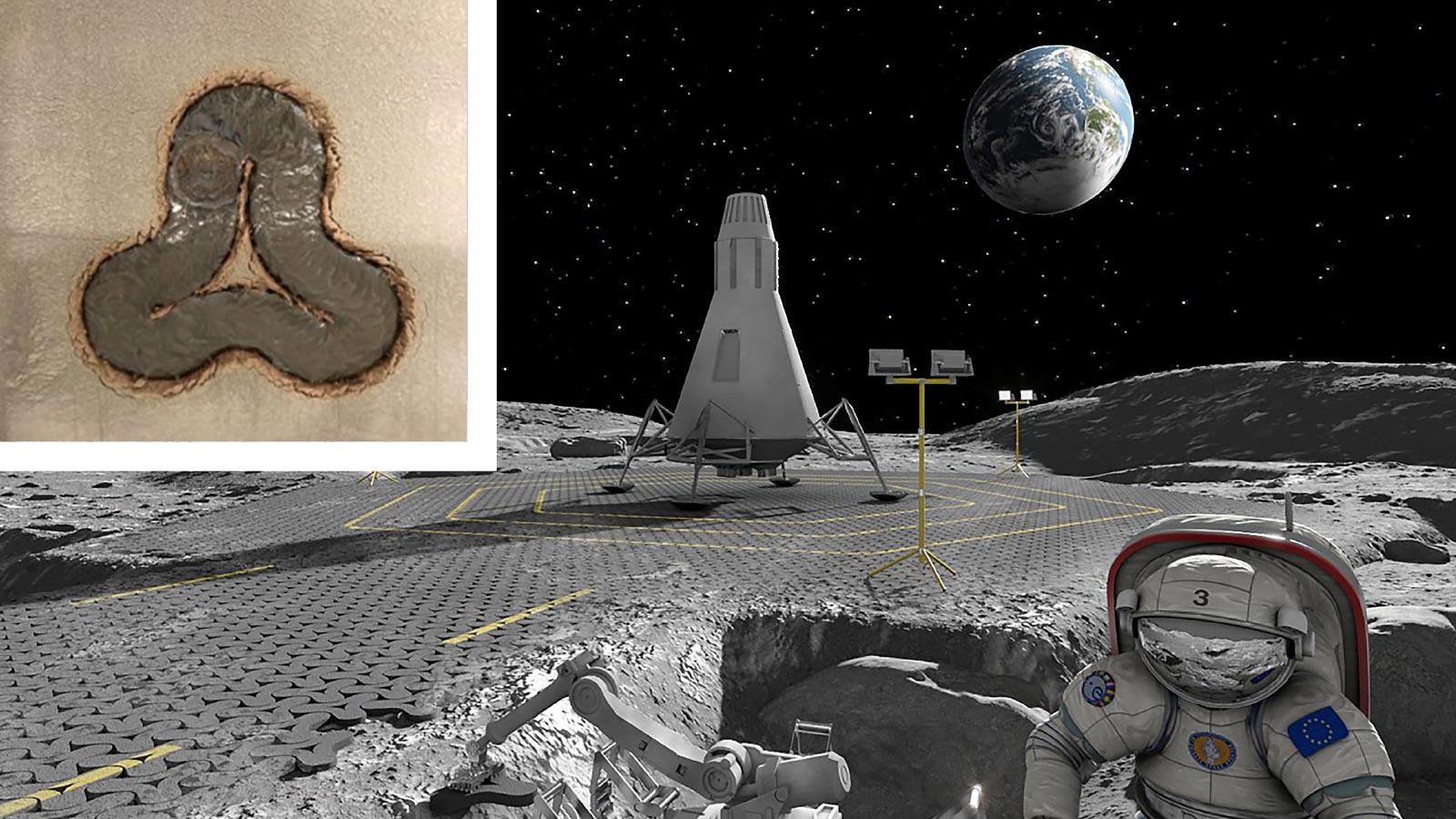
Stay Up to Date
Submit your email address to receive the latest industry and Aerospace America news.

Lunar colonists in the 2030s could witness a rover traversing the surface and pausing to hold a large lens close over the moonscape, a beam of hot light emanating straight downward. The sight would mean that early experimentation at a lab in Germany last year, described in an October scientific article, ended up paying off.
The goal of the European Space Agency-funded experimentation, done by 13 researchers, was to take the first small steps toward someday assembling a solar concentrator on the moon to melt regolith into two kinds of infrastructure: landing-launch pads and roads.
With the moon potentially becoming a busy construction site, the researchers aim to prevent landers and rovers from kicking up clouds of pestiferous lunar dust. In low g, the abrasive, electrostatically charged particles would become suspended above the surface and get into everything — potentially causing mechanical clogging, electrical hazards and spacesuit degradation.
Melting regolith into tiles might prevent such dust-ups. The work so far has been led by materials engineers Juan Carlos Ginés Palomares and Miranda Fateri at Aalen University near Stuttgart, and Jens Günster of the Federal Institute of Materials Research and Testing in Berlin.
In mid-October, the trio published early results in the journal Nature Scientific Reports. To develop the technique, the team needed to determine which light intensity and beam width best melts regolith, then formulate rules for what kind of shapes could be created. In early 2022, they began eight months of experimentation at a lab at the Technical University of Clausthal, south of Hanover, Germany. An ESA-developed lunar regolith simulant was poured into a tray-shaped crucible. The researchers did not have a rover, lens or access to atmosphere-free sunlight, so they elected to move the crucible beneath a carbon dioxide laser fired at different power levels and beam widths.
At first, they tried overlapping a fresh laser track slightly with the edge of a previous one, but that resulted in the older track cracking. Eventually, they concluded that a triangular shape, holed in the middle, evaded cracking while permitting dense interlocking.
The best melting performance was achieved at a laser power level of 3 kilowatts with a beam width of 45 millimeters. They calculated that a 2.4-meter-surface-area Fresnel (pronounced fruh-NEL) lens would be best, given its thin, concentric, annular sections can focus light with less material than a conventional lens.
“We propose the use of our simple lens system on the moon, with fewer components that can fail, and for the direct use of solar energy with no need to convert it into electricity with all its associated losses,” says Ginés Palomares.
More work lies ahead, particularly on the topic of tile resiliency, following the decimation of a launch pad in Texas by a Starship-Super Heavy rocket earlier this year. “The launch pad is a very sensitive structure, and the structural requirements must be properly calculated,” says Ginés Palomares.
Of course, Earth is not the moon, so there is reason for optimism. “On the moon, we have the advantage of its lower gravity, which facilitates launches from there,” he adds.
About Paul Marks
Paul is a London journalist focused on technology, cybersecurity, aviation and spaceflight. A regular contributor to the BBC, New Scientist and The Economist, his current interests include electric aviation and innovation in new space.
Related Posts
Stay Up to Date
Submit your email address to receive the latest industry and Aerospace America news.



